There’s nothing more frustrating than looking forward to a day outdoors with your Honda Pioneer 520, only to have it break down in the middle of nowhere.
The disappointment is real, especially when you depend on it for work or fun. If you’ve ever felt that sinking feeling, you’re not alone.
Many Pioneer 520 owners have been there. But the good news is that most issues are fixable with the right approach.
Let’s go over the most common problems and how you can tackle them head-on, so your next ride is nothing but smooth.
The most common Honda Pioneer 520 problems are starting issues, shifting problems, clutch issues, engine problems, overheating problems, battery issues, faulty fuel pump, PTO problems, headlight issues, steering problems, throttle issues, tire issues and excessive vibration problems.
Honda Pioneer 520 Problems and solutions
Now we are going to explore the most common problems of Honda Pioneer 520 that you might face on offroading or any offroad adventure. Also explore the Honda Pioneer 500 problems.
1. Starting Problems

Have you ever faced starting issues with your Honda Pioneer 520? You’re not alone! Many users have encountered similar concerns.
The most common symptoms include the engine not turning over, unusual sounds when you try to start it, or even warning lights illuminating on the dashboard.
Recognizing these signs is crucial in getting to the root of the problem.
Common Causes of Starting Issues
There are several reasons why your Honda Pioneer 520 may not start.
One potential cause is a dead battery; if your battery has low voltage, the starter may struggle to turn the engine over.
Another common issue could be a faulty starter motor, which might not engage as it should. Fuel delivery problems can also be a culprit—clogged fuel filters or empty tanks are easy oversights.
Lastly, faulty ignition systems can prevent your vehicle from starting, too.
Solutions
Addressing these starting issues often involves simple troubleshooting steps. First, check the battery voltage and consider jump-starting it if it’s dead.
If the battery seems healthy, examine the starter motor for any visible damage. You might want to replace the fuel filter if you suspect a blockage, and always ensure there’s fuel in the tank!
Finally, if the ignition system appears faulty, consulting a professional mechanic for a thorough diagnostic check can save you time and frustration.
Also explore the problems of Honda Pioneer 700
2. Honda Pioneer 520 Shifting Problems

If you own a Honda Pioneer UTV, you may encounter some shifting problems over time.
One of the first signs of trouble is difficulty in shifting gears. You might find it challenging to move from one gear to another smoothly.
Additionally, you may experience unusual noises or grinding sounds when attempting to shift.
If your vehicle hesitates or unexpectedly jumps out of gear, these are also symptoms that shouldn’t be ignored.
Also explore the problems of Honda Pioneer 1000
Possible Causes Behind Shifting Trouble
The causes of shifting problems can vary. One common reason includes low or contaminated transmission fluid.
The Honda Pioneer 520 relies heavily on clean fluid for optimal performance. If the fluid is low or dirty, it hampers the shifting process.
Moreover, worn-out clutch plates or faulty sensors can lead to similar issues.
In some cases, you might also face shifting difficulties due to external factors, like cold weather affecting the transmission system.
Practical Solutions to Consider
To address these shifting problems effectively, you can start by checking your transmission fluid. Ensure it’s at the right level and replace it if it appears contaminated.
If the issue persists, inspecting the clutch for wear or seeking help to examine the sensors would be wise. Regular maintenance checks can help avoid these issues in the first place.
Remember, if you’re ever unsure, consulting a mechanic familiar with Honda models can save you time and trouble.
They can pinpoint the exact cause and offer tailored solutions to restore your Pioneer 520’s functionality.
3. Clutch Problems
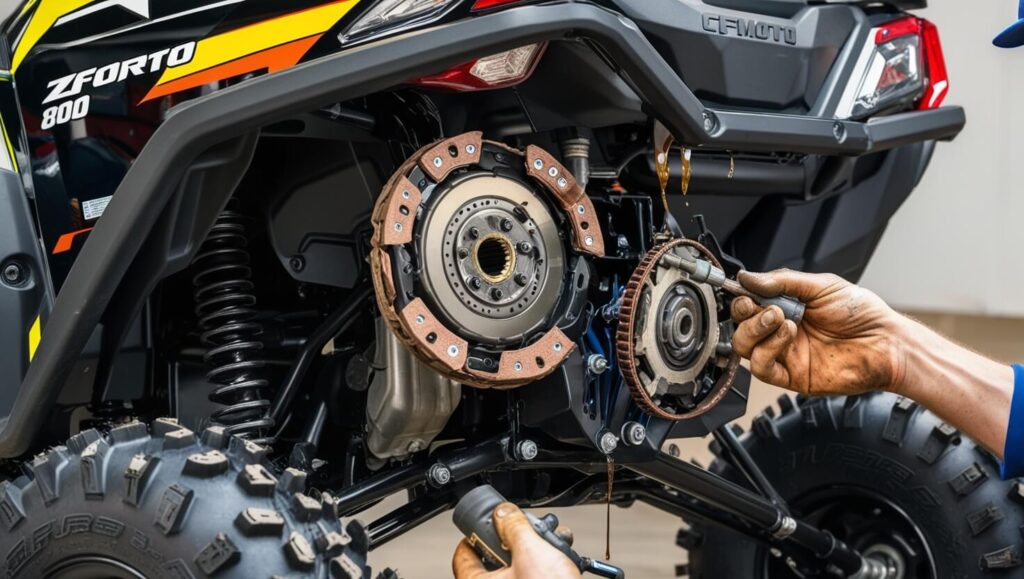
If you’ve been driving your Honda Pioneer 520 and notice unusual sounds or difficulty changing gears, these could be early warning signs of clutch problems.
You might experience a slipping clutch, where the engine revs but your vehicle doesn’t gain speed, or perhaps a sticky clutch that doesn’t engage smoothly.
Recognizing these symptoms early can save you time and trouble down the road.
Exploring Common Causes
When we dive into the causes of clutch problems in the Honda Pioneer 520, the primary culprits often include wear and tear, improper adjustments, or even a hydraulic issue.
The clutch plate might wear down over time, leading to ineffective engagement.
Additionally, if the clutch isn’t correctly adjusted, it could create excessive play, leading to further complications.
Moreover, a leaking hydraulic line may lead to poor clutch performance.
Finding Effective Solutions
Fortunately, solutions for these clutch issues are usually straightforward.
First, regular maintenance is key. Checking the hydraulic fluid and making necessary adjustments can often resolve minor issues.
If the clutch plate is indeed worn, replacing it will restore functionality. I recommend consulting with a professional mechanic to ensure accurate diagnoses and repairs.
Remember, proactive care can greatly extend the life of your clutch and enhance your driving experience.
4. Honda Pioneer 520 Engine Problems
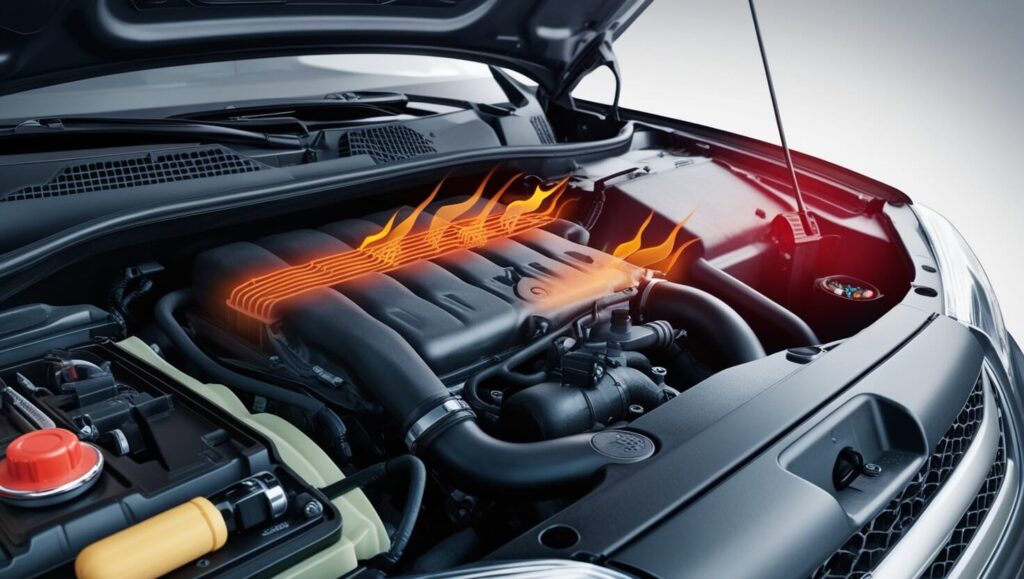
If you’re experiencing engine problems with your Honda Pioneer 520, several symptoms may indicate underlying issues.
Common signs include unusual noises, such as knocking or popping from the engine, which might suggest internal damage or wear.
Additionally, a decrease in power or sluggish acceleration can indicate that your engine is struggling.
Be attentive to warning lights on the dashboard, as they can provide crucial information about engine health.
Common Causes of Engine Issues
One frequent culprit is inadequate maintenance, which can lead to oil degradation and engine overheating.
Fuel quality is also pivotal; using contaminated or low-quality fuel can cause the engine to run poorly.
In some cases, issues with ignition components or fuel delivery systems may result in misfires, impacting overall engine performance.
Solutions
Now that you know the symptoms and causes, let’s discuss solutions to these problems.
Regular maintenance is your best defense; ensure you change the oil and filters based on the manufacturer’s recommendations.
If you notice unusual noises or that the engine isn’t performing well, I suggest consulting a professional for a diagnostic check.
For fuel-related issues, always opt for high-quality fuel and consider a fuel system cleaning if necessary.
By addressing these problems early, you can extend the life of your Honda Pioneer 520 and enjoy smooth rides.
5. Overheating Problems

Several times you might have experienced overheating issues. Some common symptoms to watch for include the engine temperature gauge rising higher than usual, a warning light on your dashboard, or even a noticeable drop in power during operation.
If you notice steam coming from under the hood or hear strange noises, these could also be signs that your machine is struggling with overheating.
Potential Causes of Overheating
Several factors can lead to overheating in the Honda Pioneer 520. One frequent cause is low coolant levels due to leaks or evaporation.
Another common issue is a clogged radiator, which prevents proper airflow and cooling.
Additionally, a failing water pump can interfere with the fluid circulation necessary to manage engine temperature. Even something as simple as dirt or debris obstructing airflow can exacerbate the problem.
Solutions
First, regularly check and maintain proper coolant levels, ensuring any leaks are repaired immediately.
Cleaning the radiator regularly will allow adequate airflow. If you suspect a malfunctioning water pump or other components, consider consulting a mechanic for professional advice.
You can also invest in an aftermarket radiator fan for extra cooling support.
By taking these steps, you can keep your Honda Pioneer 520 running smoothly and avoid frustrating overheating issues.
6. Honda Pioneer 520 Battery Problems
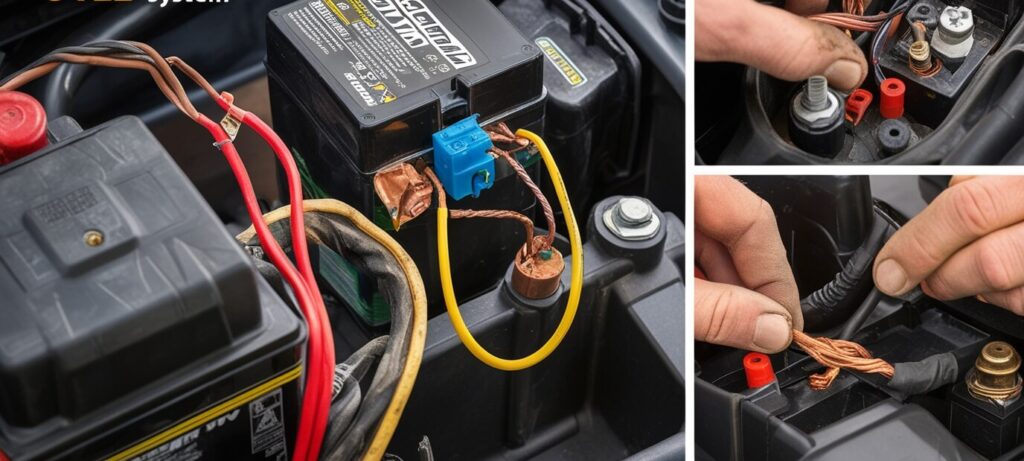
If you’re using a Honda Pioneer 520 and have noticed some issues, you’re not alone. Many users report similar battery problems.
One obvious sign might be if your vehicle fails to start, or you hear a clicking sound when you turn the key.
Additionally, dim headlights or electrical accessories not functioning properly can also indicate your battery may be on its last legs. Recognizing these symptoms early can save you from being stranded.
Causes of Battery Failure
There are a number of factors that can lead to battery problems in your Honda Pioneer 520. Over time, batteries lose their ability to hold a charge, typically after three to five years.
Extreme temperatures, whether hot or cold, can also affect battery performance, causing it to discharge faster than usual.
Furthermore, corroded battery terminals, or a faulty alternator, can lead to inadequate battery charging which ultimately shortens its lifespan.
Solutions
When facing battery problems, the first logical step is to check the connections.
Ensure that your battery terminals are clean and tightly connected. If the battery is older than five years, it may be wise to consider a replacement to avoid future issues.
For immediate symptoms like a dead battery, jump-starting your Honda Pioneer 520 can provide a temporary fix. However, if the battery frequently dies, you may need to replace it.
Regular maintenance is essential to extending your battery’s life and ensuring that your Honda Pioneer 520 continues to operate smoothly.
7. Fuel Pump Issues
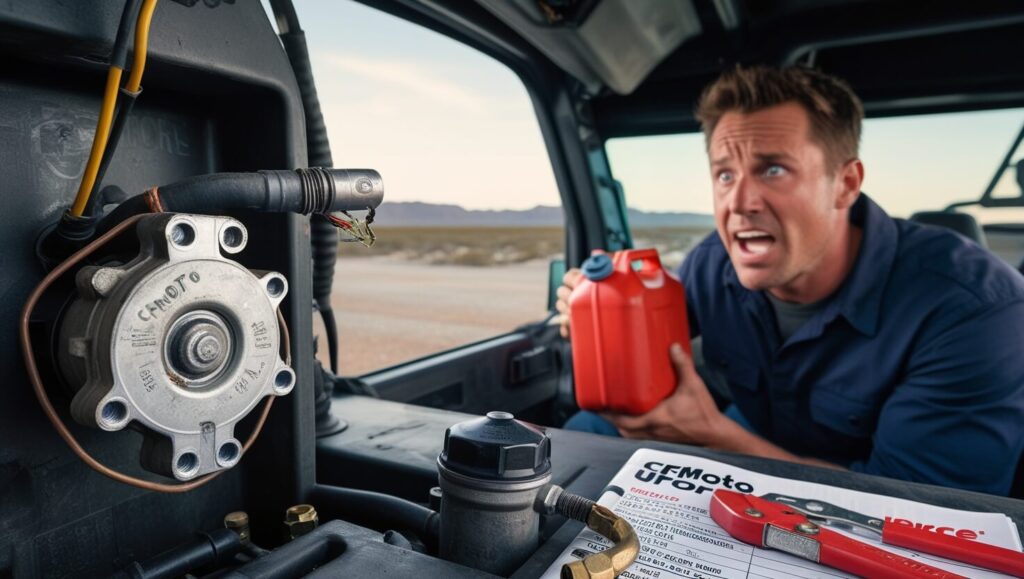
When it comes to the Honda Pioneer 520, one common issue you might encounter is problems with the fuel pump.
Often, owners report symptoms like difficulty starting the engine, engine stalling, or a drop in power during acceleration.
These signs might seem daunting, but identifying them early can save you time and money.
Common Causes of Fuel Pump Problems
Fuel pump issues can arise from various causes.
One prevalent factor is the presence of dirt or debris within the fuel system. If your fuel tank contains contaminants, they can clog the pump, hindering its performance.
Additionally, wear and tear over time can lead to mechanical failure. If the pump is experiencing electrical issues, such as a faulty relay, this could disrupt its function as well. Understanding these causes can help you pinpoint the problem more effectively.
Proven Solutions for a Smooth Ride
Start by inspecting the fuel filter, which should be changed regularly to prevent clogs. If contaminants are suspected, consider draining the fuel tank and cleaning it thoroughly.
In cases of electrical failure, check the pump relay and wiring for any signs of damage. Should these DIY solutions not resolve the issue, replacing the fuel pump may become necessary.
Always consult with a professional mechanic if you’re unsure about the process.
8. PTO Problems

If you’re experiencing difficulties with your Honda Pioneer 520’s Power Take-Off (PTO) system, it’s essential to recognize the symptoms early.
Common indicators include unusual noises while operating, failure to engage or disengage the PTO, and overheating of the unit.
If you notice a lack of power delivery to the PTO-driven attachments, this too could signify a problem. Being aware of these signs can help you take prompt action to avoid more significant damage.
Identifying Potential Causes
Common culprits include faulty wiring, which can prevent proper electrical flow, or a worn-out PTO switch, rendering it ineffective.
Additionally, you may encounter issues stemming from improper belt tension, which can lead to slippage, compromising performance.
Always consider the age and condition of your equipment, as wear and tear could also be contributing factors.
Solutions
Once you identify the symptoms and potential causes, you can implement effective solutions.
Start by checking the wiring connections and replacing any damaged wires; this simple step can resolve many electrical issues.
If the PTO switch is faulty, replacing it will typically restore function. For problems related to belt tension, adjust or replace the belt as needed.
Regular maintenance can prevent such issues from arising in the first place.
Keeping your Honda Pioneer 520 in good shape not only saves you time but also extends the life of your equipment.
9. Honda Pioneer 520 Headlight Issues
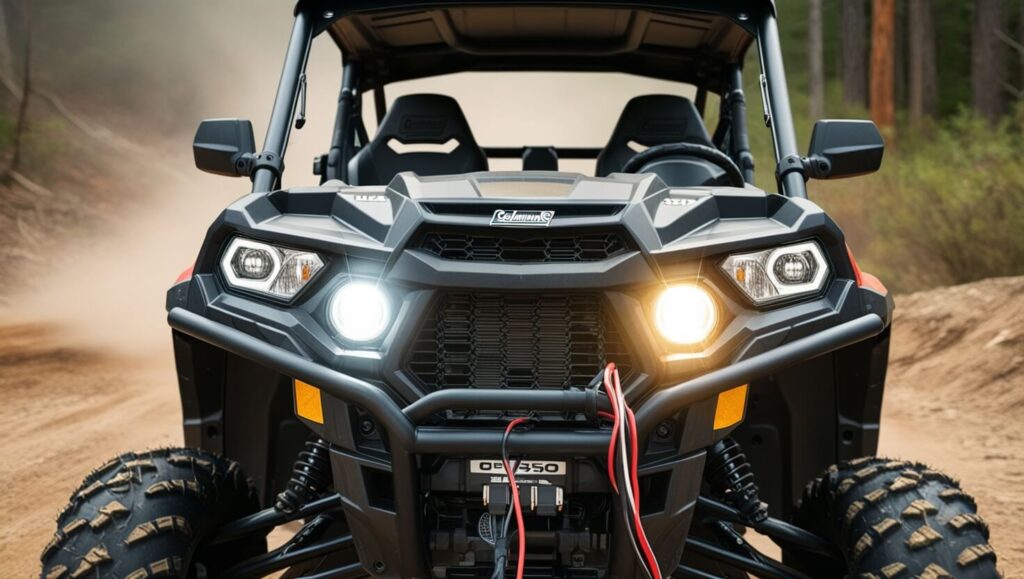
If you’re encountering problems with your Honda Pioneer 520 headlights, you’re not alone. Many users have reported similar issues, ranging from dull lighting to complete outages.
These problems can overshadow your nighttime adventures, but understanding the symptoms is the first step towards a solution.
Common Symptoms and Their Causes
One of the most noticeable symptoms is diminished brightness. You might find yourself straining to see the road ahead, which can be quite dangerous.
This dimming can often be attributed to old or burnt-out bulbs.
Another common issue is flickering lights, usually caused by a loose connection or a failing relay. If your headlights seem to fail sporadically, it could indicate a deeper electrical problem.
Solutions
Begin by checking and replacing any burnt-out bulbs—this quick fix can often solve brightness issues.
If you notice flickering, inspect the wiring and connectors for any loose or corroded parts. Tightening connections or replacing faulty relays can restore functionality.
For persistent problems, consulting a professional mechanic ensures that you address any underlying electrical issues properly, guaranteeing safe driving conditions.
10. Steering Problems
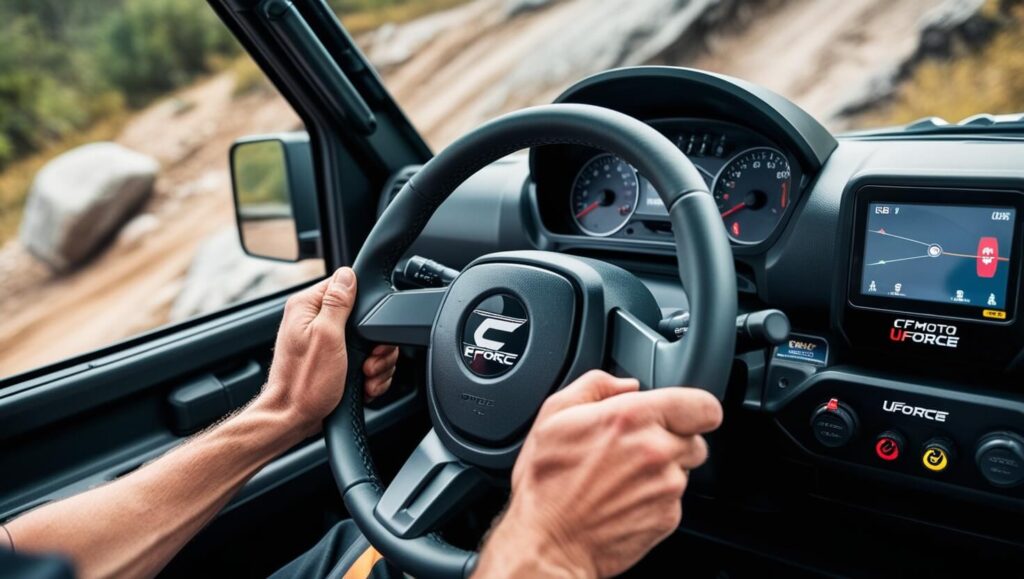
If you’re experiencing difficulty in steering your Honda Pioneer 520, you’re not alone. Many users encounter steering issues that can be both frustrating and concerning.
Some common symptoms include a stiff steering wheel, unusual noises when turning, or a feeling of looseness in the steering.
Recognizing these symptoms early is key to maintaining your vehicle’s overall health.
Common Causes of Steering Issues
One prevalent issue is low power steering fluid, which can result from leaks or regular wear and tear.
Additionally, a malfunctioning steering pump may be at fault, compromising your steering’s responsiveness.
Another common cause includes worn-out components such as tie rods or ball joints, which can lead to a lack of stability in the steering system over time.
Solutions
When it comes to addressing steering problems, starting with a thorough inspection is essential. If you notice low fluid levels, topping off your power steering fluid can often rectify the issue.
For problems stemming from worn components, consider seeking professional help for repairs or replacements.
Regular maintenance and timely service checks can prevent most steering issues from escalating, ensuring your Honda Pioneer 520 remains reliable for all your adventures.
Don’t hesitate to consult your manual or reach out to a trusted mechanic for guidance tailored to your specific needs.
11. Throttle Issues

As a Honda Pioneer 520 owner, experiencing throttle problems can be frustrating. I’ve faced similar challenges, and it’s important to know the symptoms that signal an underlying issue.
You might notice your UTV hesitating during acceleration or experiencing sudden power loss. These symptoms can affect not only your ride but also your enjoyment of the great outdoors.
Identifying the Causes of Throttle Problems
In my research, I found that several factors can contribute to throttle issues in the Honda Pioneer 520.
A common cause is dirt or debris clogging the throttle body. This often occurs during off-road adventures when dust and mud are prevalent.
Additionally, faulty throttle cables or connections can lead to poor responsiveness.
Solutions
Start by inspecting the throttle body; cleaning it with a suitable cleaner can resolve clogs. If you notice damaged cables, replacing them may be necessary to restore functionality.
Regular maintenance, such as checking for wear and tear, will also prevent future throttle problems.
By taking these steps, you can enjoy a smoother ride and longevity from your Honda Pioneer 520.
12. Tire Issues

As an rider of the Honda Pioneer 520, you might encounter some tire problems that could impact your ride. It’s important to know the symptoms of these issues to act promptly.
Common signs include uneven tire wear, deflation, and vibrations while driving. If you notice any of these, it’s a good indication that it’s time to investigate further.
Causes of Tire Problems
The causes of tire-related issues on your Honda Pioneer 520 can vary.
One significant factor is improper tire pressure. Over-inflated or under-inflated tires can lead to premature wear and can affect vehicle handling.
Additionally, misalignment or imbalance of tires can cause uneven wear, leading to possible blowouts.
Lastly, it’s essential to consider the terrain you drive on; driving on rough or rocky surfaces can also contribute to tire damage.
Solutions to Keep Your Tires in Shape
To maintain the health of your Honda Pioneer 520 tires, regular inspections are crucial.
Start by checking the tire pressure monthly, making adjustments according to the manufacturer’s recommendations.
If you notice uneven wear, it might be a good idea to have your tires rotated or aligned. You should also invest in high-quality tires suitable for off-road conditions to ensure durability.
Addressing these issues early will not only enhance your vehicle’s performance but also ensure your safety while enjoying your ride.
13. Honda Pioneer 520 Vibration Problems

Many riders report feeling strong vibrations, particularly when accelerating or driving at higher speeds. You might notice that your hands or feet tingle or feel numb after a ride.
These vibrations can also lead to an annoying rattling noise, making your journey less enjoyable.
Exploring the Causes
Excessive vibration in the Honda Pioneer 520 often boils down to a few key factors. Firstly, it could be due to tire imbalance or uneven wear, causing your vehicle to shake.
Additionally, misalignment of axles or worn-out suspension components may also be culprits. Dirt and debris can impact the engine mounts, leading to further complications.
Effective Solutions to Minimize Vibrations
To tackle these issues, I recommend starting with a thorough inspection of your tires. Ensure they are properly inflated and aligned.
Next, check for any loose bolts in the suspension system or any signs of damage. Regular maintenance, including cleaning engine mounts, will also help keep your Honda Pioneer 520 smooth.
If the vibrations persist, it might be wise to consult with a professional mechanic who specializes in UTVs.
Honda Pioneer 520 Accessories
The Honda Pioneer 520 offers a wide range of accessories to enhance both its functionality and style. Here are some key options:
- Roof and Windshield: Protects from rain and debris while adding comfort.
- Winch: Ideal for pulling heavy loads or recovering the vehicle.
- Bumpers and Skid Plates: Offers additional protection for rough terrains.
- Storage Boxes: Increases cargo space for tools or gear.
- Gun Rack and Bow Holder: Perfect for hunters.
- Tires and Wheels: Upgrade for better off-road performance.
- Lighting Kits: Enhance visibility during night rides.
- Heated Grips and Seats: Adds comfort during colder weather.
- Mirrors: Improves visibility and safety.
- Audio System: Enjoy music while riding.
Honda Pioneer 520 Top Speed
The Honda Pioneer 520 has a top speed of 45 mph. While not designed for high-speed thrills, it offers enough speed for utility tasks and off-road adventures. The engine’s 518cc power ensures it handles most terrains with ease, making it versatile for work or play.
Conclusion
While the Honda Pioneer 520 may encounter common issues like overheating or clutch problems, knowing how to address these challenges can make all the difference.
Regular maintenance and understanding the root causes can keep your ride reliable and ready for action. Don’t let minor setbacks stop your adventures—equip yourself with the right knowledge and solutions. Ready to get your Pioneer 520 back on track?
Take action now and keep your off-road experience smooth and stress-free!
FAQs
Is the Honda Pioneer reliable?
Yes, the Honda Pioneer is known for its reliability. It’s built with durable components, providing long-lasting performance, especially with regular maintenance and proper care in off-road conditions.
Where is the Honda Pioneer 520 made?
The Honda Pioneer 520 is made in Timmonsville, South Carolina, USA, at Honda’s manufacturing plant. This facility is responsible for producing many of Honda’s off-road vehicles, including the Pioneer series.
What is the difference between Honda Pioneer 500 and 520?
The Honda Pioneer 520 features a more powerful 518cc engine compared to the 500’s 475cc engine, offering more torque and power. It also has a dump bed, which the Pioneer 500 lacks.